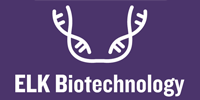


JAK3 (Phospho Tyr981) rabbit pAb
Ref. EK-ES20172
| 50µl | 188.00 € | ||
| 100µl | 316.00 € |
Product Information
- Tyrosine-protein kinase JAK3 (EC 2.7.10.2;Janus kinase 3;JAK-3;Leukocyte janus kinase;L-JAK)
catalytic activity:ATP + a [protein]-L-tyrosine = ADP + a [protein]-L-tyrosine phosphate.,disease:Defects in JAK3 are a cause of severe combined immunodeficiency autosomal recessive T-cell-negative/B-cell-positive/NK-cell-negative (T(-)B(+)NK(-)SCID) [MIM:600802]. SCID refers to a genetically and clinically heterogeneous group of rare congenital disorders characterized by impairment of both humoral and cell-mediated immunity, leukopenia, and low or absent antibody levels. Patients with SCID present in infancy with recurrent, persistent infections by opportunistic organisms. The common characteristic of all types of SCID is absence of T-cell-mediated cellular immunity due to a defect in T-cell development.,domain:Possesses two phosphotransferase domains. The second one probably contains the catalytic domain (By similarity), while the presence of slight differences suggest a different role for domain 1.,function:Tyrosine kinase of the non-receptor type, involved in the interleukin-2 and interleukin-4 signaling pathway. Phosphorylates STAT6, IRS1, IRS2 and PI3K.,online information:JAK3 mutation db,PTM:Tyrosine phosphorylated in response to IL-2 and IL-4.,similarity:Belongs to the protein kinase superfamily. Tyr protein kinase family. JAK subfamily.,similarity:Contains 1 FERM domain.,similarity:Contains 1 protein kinase domain.,similarity:Contains 1 SH2 domain.,subcellular location:Wholly intracellular, possibly membrane associated.,subunit:Interacts with STAM2 and MYO18A (By similarity). Interacts with SHB.,tissue specificity:In NK cells and an NK-like cell line but not in resting T-cells or in other tissues. The S-form is more commonly seen in hematopoietic lines, whereas the B- and M-forms are detected in cells both of hematopoietic and epithelial origins.,
Chemical properties
Technical inquiry about: EK-ES20172 JAK3 (Phospho Tyr981) rabbit pAb
If you want to request a quotation or place an order, please instead add the desired products to your cart and then request a quotation or order from the cart. It is faster, cheaper, and you will be able to benefit from the available discounts and other advantages.


